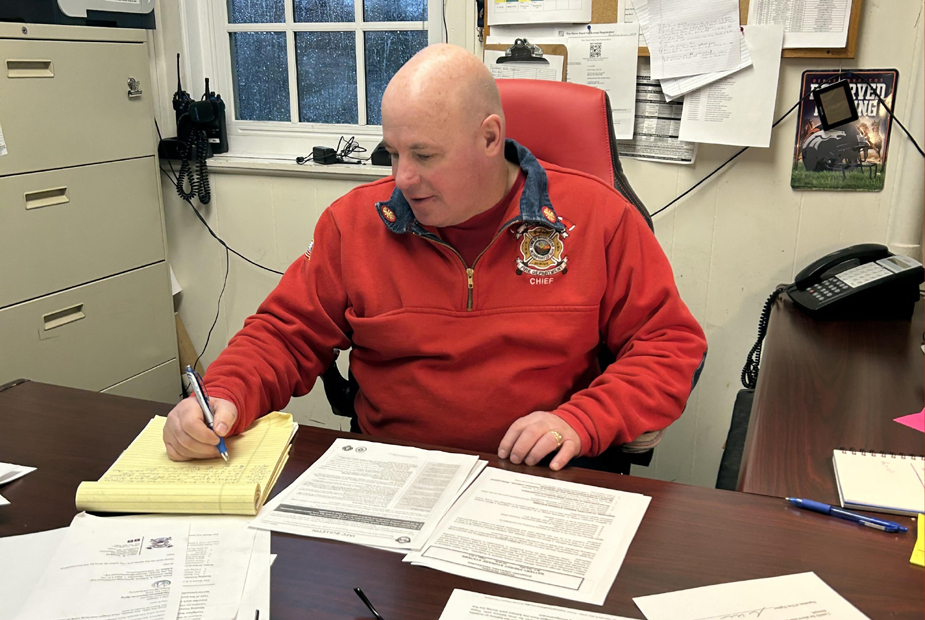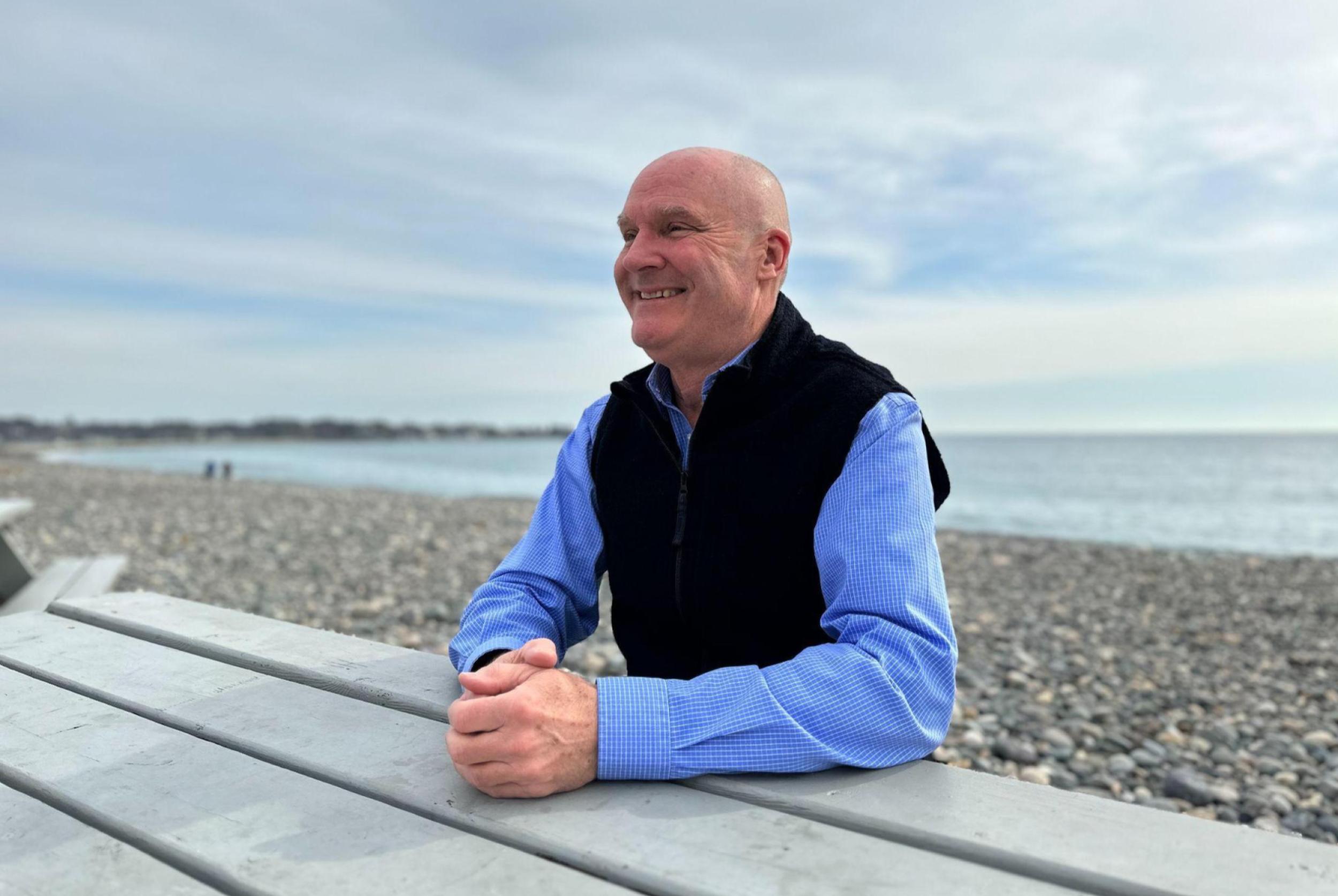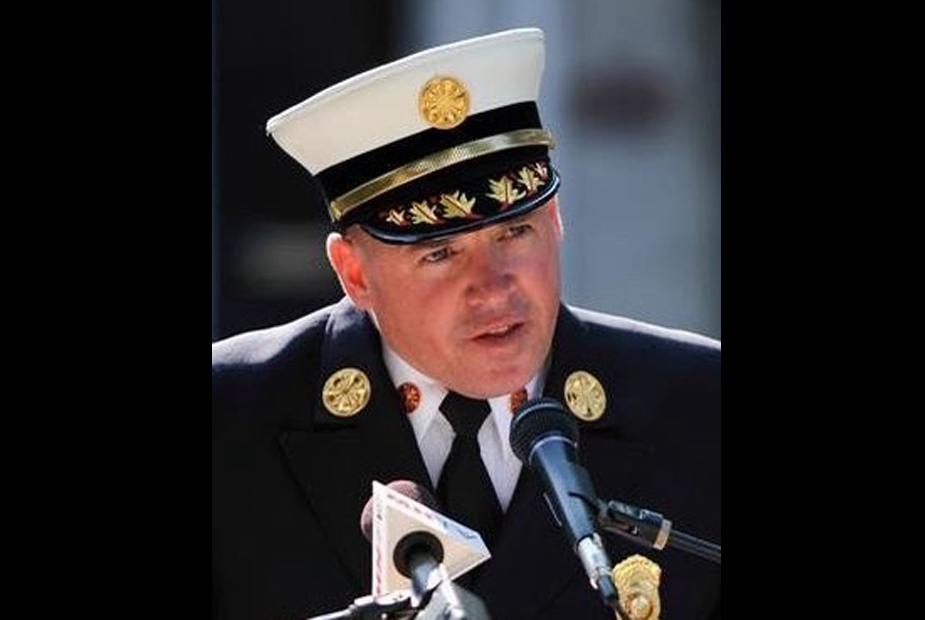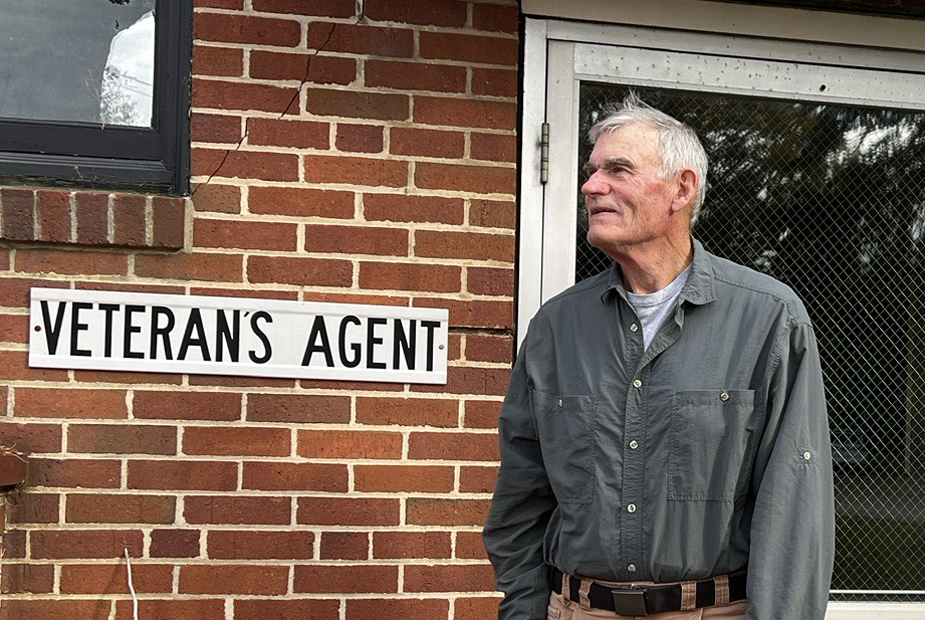Marblehead Fire Chief Part Two: Electric Vehicles, New Services, & More
With nearly 40 years of service to this town, Marblehead Fire Chief Jason Gilliland is an institution. Today we continue a profile that began with Thursday’s installment.
Gilliland, having served as fire chief for the past thirteen years, is familiar with the fact that maintaining or improving quality often requires either pivoting to accommodate community changes or proactive efforts to modify how things are done. We spoke about a range of important issues, including two specific areas in which change is afoot– electric vehicles and emergency medical services.
In one of these areas, he sees developments happening in town that require new levels of community awareness and education as well as changing department response protocols. In the other, he envisions changes that could potentially save the town an estimated million dollars annually.
Electric Vehicles: What Are the Unintended Consequences of Lithium Batteries?
Gilliland is by no means opposed to exploring what is known as “green energy,” but his role is to evaluate everything that could threaten fire safety. “We should pump the brakes,” he says with regard to the vast numbers of electric vehicles (and of course their batteries) sitting in attached garages around town. “A couple years ago a home on Curtis Street caught fire and went on to be a total loss,” he says. This was because two electric scooters with lithium ion batteries were charging and spontaneously caught fire. Electric vehicle (EV) batteries are even larger and more powerful, and when exposed to extreme heat, extreme cold, or overcharging, the risks of fire become very real. In addition, unlike with a standard fire, EV fires pose a “thermal runaway” danger, which puts anyone around the battery–particularly first responders dealing with a fire–at risk of exposure to toxic chemicals. It appears to be very difficult to subdue these fires without either submerging the entire vehicle in water or engulfing the EV in massive amounts of water, which sometimes is difficult or not optimal.
Gilliland recognizes that many residents own electric vehicles and more will buy them in the future. In addition, there has been increased interest recently in residential battery storage systems (BSS) that allow residents to store electricity in their homes for use at a later time. At the September meeting of the Marblehead Municipal Light Department (MMLD), in which some members of the board advocated in favor of these batteries, Gilliland raised a number of safety concerns.
MMLD member responses were mixed, with Jacques Yarmoff noting that “our purview is not safety; it is policy around allowing batteries.” Lisa Wolf added that “we have to agree what risks are acceptable,” and Simon Frechette stated that “the homeowner takes some of that risk.” As of now, the Department of Fire Services allows residential storage of batteries.
Gilliland is working on creating a Standard Operating Procedures manual for his firefighters to deal with the risks arising from the growth in EV ownership. In the meantime he warns that all owners of electric vehicles (and in some cases other devices with lithium batteries, including drones, electric scooters, and even cell phones) should be aware of the following:
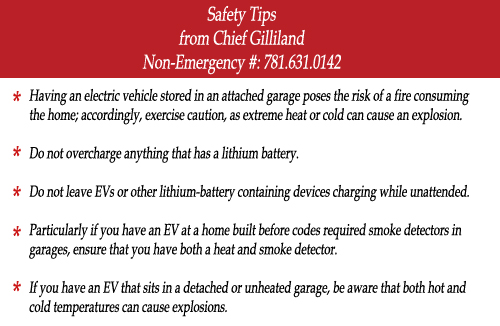
Could the Marblehead Fire Department Take Over Soup-to-Nuts Ambulance Services?
One area in which Gilliland sees room for the department to grow and develop is in the handling of emergency medical services. As things stand, Marblehead Fire responds to every medical emergency coming in via 911. All department trucks have already been rated Class 5 ambulances under Gilliland’s leadership. But in order to have the ability to transport individuals to hospitals, the town’s fire department would have to own and manage ambulances, as well as have the needed staff. “It would involve a discussion with the firefighters’ union and the town,” he says, but he believes that the insurance-reimbursement or “collection rate” for private ambulances is excellent. After staffing costs and capital investments for ambulances and equipment, Gilliland estimates the town could bring in up to an additional million dollars annually in revenue.
Partnership with the Harbormaster
When he first became fire chief, Gilliland wanted to create a partnership with the town’s harbormaster, Mark Souza, who bears primary responsibility for managing water-related incidents through November every year, after which he remains on call for emergencies. Gilliland was able to secure a surplus Coast Guard defender boat and now partners with the harbormaster in using it. The boat, which has great firefighting capabilities, was recently deployed for two incidents in which individuals needed rescue from the ocean. Though the boat was not ultimately used, Gilliland noted how important it was to have it available. Both individuals were successfully rescued.
The Department and Its Firefighters: Always Training, Improving, and Volunteering
“In my day,” Gilliland reflects, “there was more togetherness in the fire house: cards, talking. Now they’re all on their devices.” He laughs, noting that it is his turn to be “just the old guy.” But in spite of the differences in how bonding takes place today versus decades ago, “this batch of firefighters are [friends and] a really good group…who are very public minded.” He recognizes that change can often be good. “I was once the young guy bringing the chief ideas about not just responding to fires and car accidents, but being EMS too.” And when Gilliland came into the department in the 1980s with new ideas about the fire department taking on a broader role, it stuck.
From boot drives to toy drives, Marblehead’s firefighters have long put in extra effort to give back, recently raising more money for Muscular Dystrophy than any other fire department in the Commonwealth. And Gilliland himself considers interacting with the community one of the best parts of his job. He teaches CPR as often as he can for local religious groups, yacht clubs, non-profits, and businesses. “It’s a great way to connect with the town.”
When Gilliland’s team is not out on calls, they’re never resting on their laurels. “There’s always training,” he says. “One thing people don’t know is how on top of training our firefighters are. We are doing some sort every day.” It could be “CPR, wounds, strokes, or fire training, or using the vacant Coffin school to train in, with aerial ladder setups. We have huge trucks with a lot of water in them and air brakes and have to keep proficient in driving them,” Gilliland says of his commitment to keeping his team on its toes. “We take full advantage of our insurance–MIAA–that offers trainings. In the spring they’ll bring in a driving simulator.” This non-stop training, he says, has paid off in many ways, including saving the town money by increasing the department’s ratings for response times and effectively manning apparatus. We take advantage of “every option to keep proficient in all areas,” he adds.
Many on his team have upgraded their own certifications and skill sets. Captain Eric Ridge, for instance, can manage any situation requiring HazMat knowledge. “If someone calls from the high school concerned about different lab chemicals,” Ridge is able to help.
Gilliland’s own son, Lieutenant Liam Gilliland, is trained in search and rescue and, as part of the Beverly-based Mass Task Force, traveled to Florida earlier this year to assist after a massive storm. And “Lieutenant Cerrutti, Brendan Sheehan, Captain Thibodeau, Greg Lydon–they all went through the fire investigation program,” says Gilliland.
Trends in 911 Calls
Three-quarters of the calls to which Marblehead Fire responds, according to Gilliland, are medical in nature, which has been the case consistently for years. Of those, there are cardiac and stroke-related issues, particularly among the senior population, and “lift assists.” These, he says, sometimes happen when a person who has a home health aide during the day is unattended at night and falls. This is also why having a residential lock box can be particularly helpful to allow emergency personnel fast access. (See visual in part one of our profile).
Gilliland points out what many know anecdotally. “The hospitals are jam-packed.” Because of this, sometimes people call 911 for non-emergencies, expecting to bypass the long hospital wait times by coming in via ambulance. “They still have to triage you, though,” he says, “and it does not shorten the wait times.” While he strongly encourages folks to call 911 for any suspected emergency, he cautions that calling an ambulance for a bad cold might mean that the personnel and ambulance are tied up while someone else facing a cardiac issue must wait. The department has responded to 911 calls only to find the caller waiting with a packed suitcase, says Gilliland.
Asked if there are increases in any type of calls in recent months or years, Gilliland says that mental health calls have increased since the lockdowns for Covid. “My personal observation is that these calls have gone up since Covid,” and “it’s a mix of younger and older callers–certainly more than we had prior to Covid.” He goes on to add that, “Covid has forced a lot of different changes, and this made it tough on the younger kids–not being able to see friends, having to wear masks, just as you’re developing your personality.” These more frequent mental health calls can be serious and almost always end up with transport to a healthcare facility. “Last thing you want is to respond to someone who is distraught and think they’re fine–they wouldn’t have called in the first place if they were fine–and find out it’s turned into something more serious.”
He would not discuss suicide-related calls other than to say that while calls related to mental health emergencies have increased since the pandemic unfolded, he has not seen any accompanying increase in suicides.
First Responder Stress
It is not uncommon for first responders to experience incredible stress. At both the chiefs’ level and the firefighters’ level, the department has access to clinicians who help with managing stress that may stem from–for instance–calls involving “a young child getting hurt or something like that.” Apart from the formal channels for assistance, “we’re also a support system here with our own coping mechanisms,” says Gilliland. “But we have brought in Critical Instance Stress Debriefing teams to sit around and have those conversations. Police, fire, military all use them and they’ve proven to be a very effective means to help a person cope.”
Other support comes in the form of positive feedback from the community. The local clubs, like Rotary and the Masons, are very supportive of the fire department, says Gilliland. And the cards and cookies dropped off by grateful town residents are extremely well received, he adds. “To me, a call or letter with feedback or a pat on the back means more than a raise; it tells us we’re doing something right.”
Case Updates
Earlier this year fire and police determined that several fires at Marblehead’s transfer station had been intentionally set. It is thought to be juveniles who were involved, but the case remains open, according to Gilliland.
And just last month a fire was set–and the alleged culprit caught on camera–at the Mariner in Marblehead. Gilliland says investigators are close to solving that case.
In Swampscott several weeks ago, an Elmwood Road home caught fire. The Marblehead Fire Department assisted in managing the incident, and Gilliland says that it stemmed from a fire-safety mistake. Ashes from a fireplace that had not cooled sufficiently, he says, were not disposed of in an appropriate vessel, and when they were dumped outside, the home caught fire.
Future Plans
For the future, Chief Gilliland anticipates possibly teaching at a local college. With the knowledge he has acquired through 35-plus years keeping Marblehead’s citizens safe, he is sure to find continued success imparting hard-earned lessons to the next generation.

